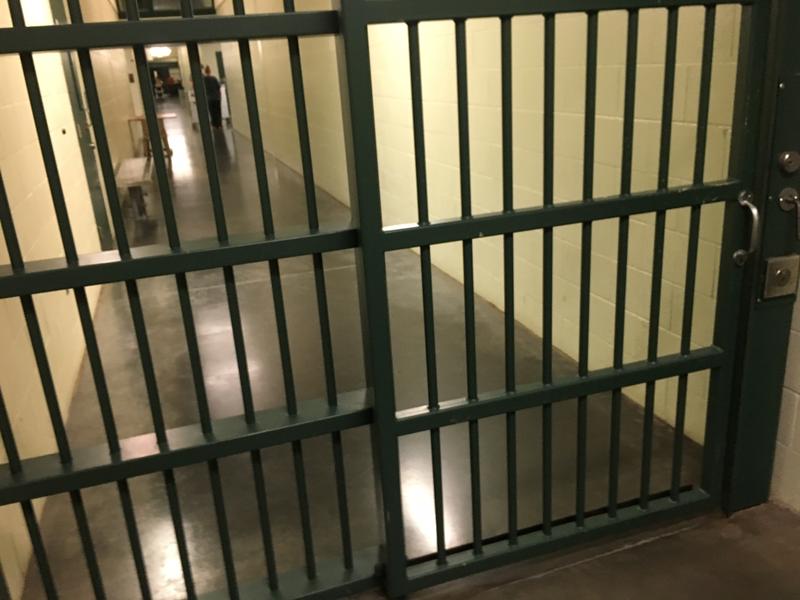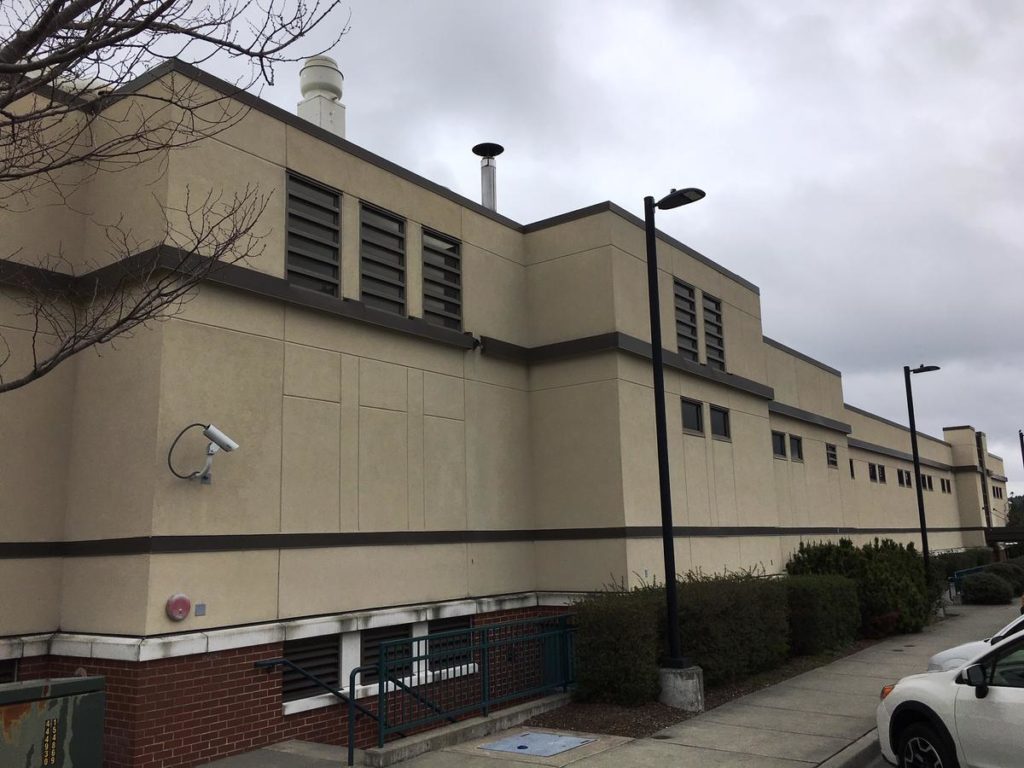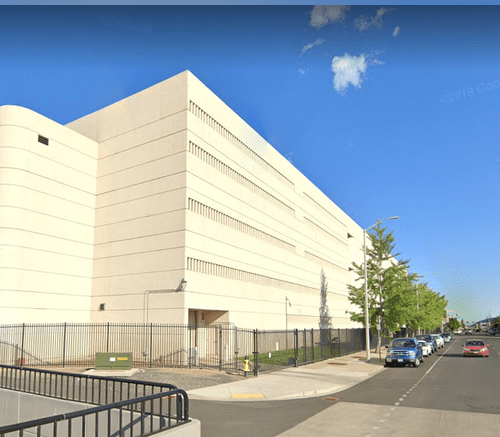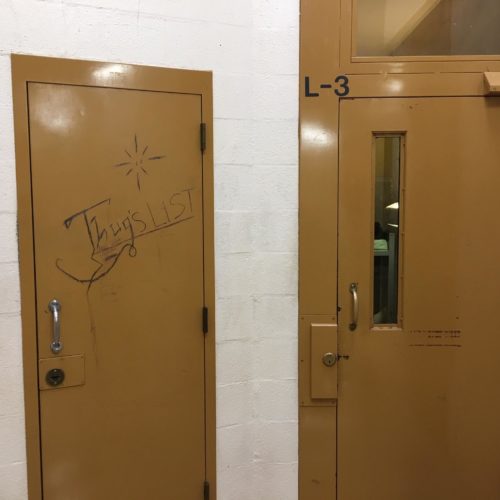
The Coronavirus Crisis Struck, And Washington Jails Emptied Out
READ ON
Updated April 27, 2020, 5:20 p.m. PT
In a dramatic example of COVID-19’s impact on the criminal justice system, the number of people in Washington jails has plummeted in recent weeks, ending virtually overnight an overcrowding problem that plagued many facilities for years. Today, a few of the state’s smallest jails are reporting inmate populations in the single digits.
“Honestly, I would never have expected to see something like this in my lifetime and I’ve been doing this for 20 years now,” said Jose Briones, the chief deputy of the Island County Jail on Whidbey Island where the population has dropped by approximately half.
In 2018, the average daily population across 58 city, county, regional and tribal jails was more than 12,000 inmates. As of this week, 46 of those jails were reporting a total census of roughly 5,500 – a 54% reduction, according to tracking by the Washington Association of Sheriffs and Police Chiefs (WASPC).
Similarly, the Oregon State Sheriff’s Association reports a 44% reduction in the average daily population in Oregon jails.
The reason for the rapid decline is two-fold: fewer people are being booked into jail and more people are being let out.
ALSO SEE: Coronavirus News, Updates, Resources From NWPB
The swift effort to reduce Washington’s jail populations was spurred by concerns that overcrowded jails posed a high risk for COVID-19 outbreaks. It also stands in contrast to the comparatively slow effort by the state of Washington to reduce its prison population. Unlike in prisons, most people in jail are awaiting trial and have not yet been convicted.
To reduce the influx of new jail inmates coming in the front door, many jails instituted strict booking restrictions to limit who can be locked up during the COVID-19 crisis.
For instance, until this week, the Snohomish County Jail in Everett would only accept “mandatory bookings,” such as homicide, assault and domestic violence, according to a county spokesperson. As a result, the jail’s population tumbled nearly 70% — from a pre-COVID-19 level of about 950 inmates to a low of 290.
As of Tuesday, the booking restrictions had been lifted and the jail was once again accepting misdemeanor arrestees.
Even as new jail bookings have slowed, prosecutors and public defenders across the state have been huddling over lists of people already in jail to see who might be eligible for release, pending a judge’s approval.
“I watched the numbers as they dropped and it was significant,” said Thurston County Prosecutor Jon Tunheim, who estimated his county’s jail had released 40 to 50 people by April 2, a 30% reduction.
One of the people released from the Thurston County Jail was Justin, who asked that his last name not be used. The 27-year-old contractor and father had been booked into jail in early February on charges of domestic violence and driving under the influence.
Justin said he was housed in a packed 68-man dormitory and was increasingly worried about COVID-19.
“I think we measured 13 inches apart from each other,” Justin said.
Originally, Justin said, he had planned to fight the charges at trial in May. But after the COVID-19 crisis struck, his trial was delayed. Then in March, he was offered the chance to plead guilty to a reduced set of charges and be released to live with his grandmother on electronic home monitoring. Justin said he reluctantly took the deal.
“I was extremely relieved to be released as early as I was in the situation,” Justin said. “But, no, I wouldn’t have taken [the plea deal] under any other circumstance.”
Unlike in prisons, most people in jail are awaiting trial and have not yet been convicted.
Besides booking restrictions and proactive releases, another factor that likely contributed to a reduction in the state’s jail population is a Supreme Court order that directs the state’s courts on how to respond to the public health emergency.
The order requires that motions for pretrial release from jail are heard on an “expedited basis” and allows the judge to consider someone’s risk for complications from COVID-19 as part of the decision. For someone identified as vulnerable or at-risk, courts must schedule pretrial release hearings within five days.
Also prioritized for hearings are plea bargains and sentencings that would likely result in the release from jail of someone in pretrial detention.
Additionally, the Supreme Court’s order defers for 45 days arraignments for people who are not currently jailed. That may, in effect, delay new jail bookings because sometimes an arraignment results in a judge ordering a defendant into custody.
Finally, judges have been told to limit arrest warrants – known as bench warrants — for someone who fails to appear for a court date, unless it’s a matter of immediate public safety.
The goal of quickly thinning Washington’s jail populations was to protect inmates at a higher risk from the virus and reduce the likelihood of COVID-19 spreading in a crowded jail environment, as happened at Rikers Island in New York and the Cook County Jail in Chicago.
“Any outbreak in a facility would obviously just be a bad thing,” said John McGrath, WASPC’s jails liaison and the former director of Spokane County Detention Services. “It’s going to spread throughout the facility because the majority of facilities have been overcrowded.”
The effort to thin Washington’s jail population has earned praise from public health experts.
“I am very impressed and proud of the job that the jails in Washington state have done with regard to decreasing populations,” said Dr. Marc Stern, a correctional health care expert who has been advising Washington jails and the National Sheriff’s Association during the COVID-19 crisis.
In March, Stern issued guidance to Washington jails through WASPC on how to manage COVID-19. Besides advising that jails screen staff and incoming inmates for symptoms, he urged jail commanders to talk with prosecutors and judges ahead of time about developing a plan to reduce jail populations.
“I think the reduction in numbers is going to save lives both of people who are incarcerated, as well as staff members, officers and medical staff and, as importantly, also members of the community,” said Stern who described a jail as a “landlocked cruise ship.”

The Island County Jail in Coupeville, pictured in this file photo, reduced its population by approximately half in the wake of the COVID-19 pandemic. CREDIT: Austin Jenkins/N3
So far, just seven inmates and nine staff members across five Washington jails have tested positive for the virus, according to WASPC’s weekly monitoring. All of the inmates had been released from jail before their positive test results came back. As of this week, Washington jails were reporting that 69 inmates were in quarantine. No jail inmates have been hospitalized or have died from COVID-19. But because testing is still very limited in jails, the numbers may not capture the full picture.
In a legal brief filed with the Washington Supreme Court in a case involving state prison inmates, WASPC highlighted efforts to shrink jail populations in 11 Washington counties from coastal Pacific County to Spokane County.
“Throughout the state, counties and cities are taking steps to reduce jail populations safely and responsibly,” the brief said.
Among the examples cited in the WASPC brief was the Clark County Jail in Vancouver where 200 lower risk, nonviolent inmates were released in three days and inmates serving shorter sentences were temporarily furloughed, according to reporting by The Columbian.
In Spokane County, where overcrowding conditions in the main jail have been an issue of contention for years, the population has now dropped roughly 40% through a combination of court-ordered releases and fewer new bookings.
“Obviously it operates a lot smoother with [a] lower population,” said Mike Sparber, Spokane County’s detention services director. “That being said, it’s really hard, at least from my perspective, not to be mindful of [who] is not getting booked in or [who] is not going through the process.”
It’s not clear what impact, if any, the reduction in jail populations will have on the crime rate. Since the COVID-19 crisis struck, the state has experienced an overall decrease in burglary, theft and assault, but a rise in domestic violence, according to WASPC.
“I’m watching to see if there’s an impact on the level of crime in our community … because I think that is our primary concern,” said Tunheim, the Thurston County Prosecutor.
In the city of Spokane, a police department spokesperson said the weekly crime rate has remained mostly flat, except for a notable increase recently in commercial burglaries. But the spokesperson said there’s “no way to know” if that’s related to the reduced jail population.
Matthew Harget, the chief deputy director of the Spokane County Public Defender’s Office, said the early release of inmates was unlikely to have an impact on crime rates and rejected the argument some have made that inmates are safer from COVID-19 in jail than out.
“Releasing non-violent offenders who are already near the end of their sentence is the right and humane thing to do,” Harget wrote in an email.
Beginning in mid-March, the ACLU of Washington, Disability Rights Washington and Columbia Legal Services wrote a series of letters to officials in counties, including Spokane County, with larger jail populations calling for “immediate actions” to reduce their population. The letters also recommended the jails take additional measures to protect remaining inmates in the facilities.
Now, a month later, attorney Jaime Hawk with the ACLU of Washington, is reflecting on the fact it took a global pandemic to accomplish something she’s been advocating for years — a dramatic reduction in the number of people in jails.
“We do want, on some level, to recognize this progress,” said Hawk, who is the legal strategy director for the ACLU’s Campaign for Smart Justice. “But we know even with these reductions there are still a lot of people that can be safely released.”
Besides the changes in population, Washington jails have also taken other steps to reduce the risk of COVID-19 getting into their facilities and, if it does, from spreading.
In Island County, jails chief Jose Briones said his facility has implemented a series of new protocols. For instance, officers and deputies remain in their cars when delivering arrestees, staff and inmates are screened before coming into the facility and records clerks are told to drop paperwork outside the door. In addition, inmates are helping with efforts to sanitize the jail.
ALSO SEE: Coronavirus News, Updates, Resources From NWPB
Other changes came in the wake of a rapid reduction in the jail’s population. Briones said when the COVID-19 crisis struck, the county’s law and justice council put together a response plan. The jail instituted new booking restrictions and non-violent inmates were identified for release or furlough. Over the course of a week-and-a-half, the jail’s population dropped from 58 to 40, Briones said.
That allowed the jail to immediately create two quarantine units, one for men and one for women. In the ensuing weeks, the population continued to fall allowing for a third quarantine unit and for all inmates to be placed in single cells.
On a recent day, the Island County Jail, a 58-bed facility, held just 28 inmates.
But despite the rapid emptying of jails, many jail directors are bracing for a surge in inmates after the worst of the crisis passes.
Briones expects his jail to quickly fill back up once public health restrictions are lifted and furloughed inmates return along with those whose sentences were delayed.
“My crew understands that this is a short-lived thing and as much as you can enjoy a little bit of breathing room right now, we’re going to pay with interest down the road,” Briones predicted.
In Spokane County, detention director Mike Sparber has a similar concern and likens this moment to the receding of waters before the arrival of a tsunami. He’s now urging the creation of a statewide task force to review lessons learned from this crisis.
John McGrath, the former head of the Spokane jail who is now WASPC’s jails liaison, agreed the state should not go back to the pre-COVID “status quo.”
“I think this is an opportunity to make good choices as we move forward so that we don’t end up with the overcrowding situation we were in before,” McGrath said.
Oregon Public Broadcasting reporter Conrad Wilson contributed to this story.
Related Stories:

Coronavirus Cases Rise Sharply In Yakima County Jail
The first person in the Yakima County jail tested positive for coronavirus in May — an inmate who transferred to the Yakima County jail from the city jail in Sunnyside, 35 miles southeast of Yakima. On July 6, the jail reported that 83 inmates had caught the virus, and this number continues to grow.

Booked And Buried: Jail Suicide Epidemic Doesn’t Extend To Northwest Prisons
Between 2008 and 2018, suicide accounted for 47% of jail deaths with a known cause in Oregon and Washington, according to an investigation by OPB, KUOW and the Northwest News Network. But an analysis shows the region’s prisons aren’t plagued by the same crisis.

Booked And Buried: Aging Northwest Jails Endanger Lives, But Replacing Them Is Controversial
Between 2008 and 2018, more than 300 people died after being taken to a county jail in Washington or Oregon, according to an investigation earlier this year by OPB, KUOW and the Northwest News Network. Nearly half died by suicide.















